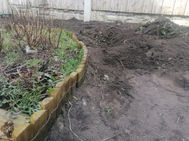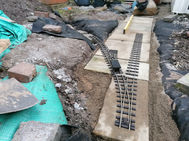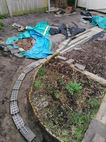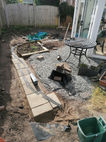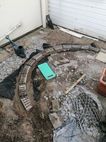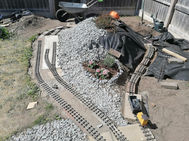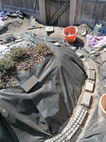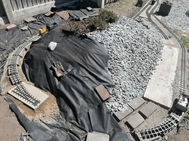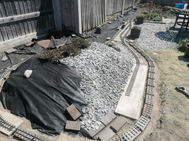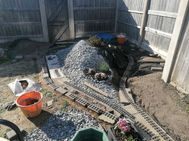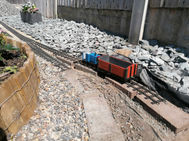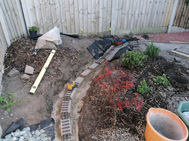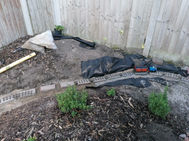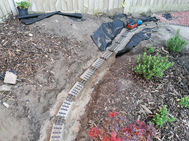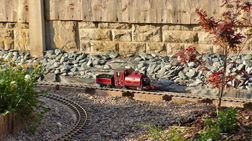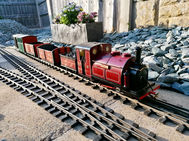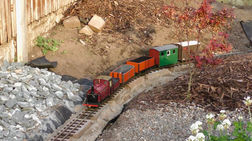History of the 16mm Scale Sefton & West Lancs
Story of the construction of the Sefton & West Lancashire Light Railway. For the fictional history of the Sefton & West Lancs click here.
On moving into our first home, the garden was mainly lawn. For the first few years a lot of turf was removed and a seating area and path were constructed, but building a garden railway was always I'll start it next year. With the coronavirus lockdown coming in Spring 2020, finally the opportunity, with the 1:1 scale lines being closed, was taken to start on the garden railway. One the reasons for the constant delay of building the line was the original plan was to build a raised bed for the railway, the decision was taken to constructed the line at ground level, with the foundations built on the large amount of paving slabs and bricks that where already in the garden when we moved in.
Phase One
Porthmelling - Strawberry Corner - Aughtonside
Clearance work started in mid-March, with track laid out, before the foundations where laid from Porthmelling to Aughtonside. Click through the gallery (right) to see the railway being constructed.
Phase Two
Aughtonside Slate Ballon Loop
Foundations were laid at the end of May.
Phase Three
Aughtonside - Bluebell Line - Porthmelling
Phase Three was constructed on two of the hottest days of the year in late June.
Upon completion of this section, with the full main running line complete and a circular journey possible, ballasting will commence before all efforts are then concentrated on Sefton station (Phase Four).
Phase Four
Aughtonside - Sefton
The final phase of the railway was constructed over August 2020, with the foundations and track laid by the end of the Bank Holiday weekend. Further landscaping work is required, along with buildings and ballasting.
Winter 2021 - Testing Times
Porthmelling Remodelling
March - April 2021
Porthmelling station was relaid in March 2021. The inner curve was previously laid with 1st radius curves, which restricted which rolling stock could use the line, this was replaced by 2nd radius curves. The passing loops were shortened, the originally loops being longer than the loop at Sefton. The yard was also remodelled, with additional and longer sidings.
Previously trains generally ran via the outer loop, unless passing, with bogie stock not generally being run through the inner loop. After completion of the project the inner loop become the down line and outer loop becoming the up line, following Ffestiniog practice of right hand running.

